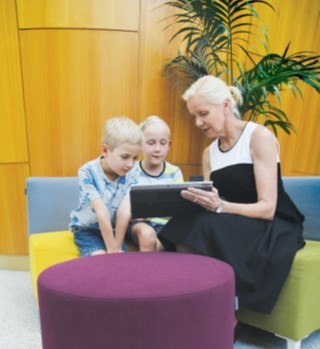Search

News & Events
Decades of bullying research pays offProfessor Donna Cross and her team at The Kids Research Institute Australia have challenged and overturned damaging attitudes that saw bullying tolerated in childhood.
Research
Cyber AgressionInformation and communication technology has allowed individuals to engage in aggressive behavior on multiple distinct platforms with different capabilities
Research
Protecting and Promoting Young People’s Social and Emotional Health in Online and Offline ContextsYoung people's use of mobile phones and access to the Internet have increased dramatically in the last decade, especially among those aged 9-15 years.
Research
If it’s about me, why do it without me? Genuine student engagement in school cyberbullying educationThis study reports on a three-year group randomized controlled trial, the Cyber Friendly Schools Project (CFSP), aimed to reduce cyberbullying among grade 8...
Research
Bullying behaviour following students’ transition to a secondary boarding school contextThis study investigated the prevalence and types of bullying behaviour that boarding students experienced during the transition to a secondary boarding school.
Research
School staff responses to student reports of bullying: A scoping reviewBullying in schools has been associated with poor academic and mental health outcomes in students. While students are often encouraged to report bullying incidents to school staff, some students avoid reporting incidents as they lack faith in staff members ability to intervene.
Research
School bullying: moving beyond a single school response to a whole education approachBullying is an issue that continues to represent a significant challenge to the provision of pastoral care in schools. In more recent decades, it has evolved in its complexity to include forms of bullying often referred to as cyberbullying or online bullying.
Research
Protecting and promoting young people's social and emotional health in online and offline contextsYoung people’s use of mobile phones and access to the Internet has increased dramatically in the last decade, especially among those aged 9–15 years. Young people now rely on information and communication technology for much of their social interaction, which can have both positive and negative effects on their social and emotional well-being. Of particular concern is the extent to which digital technology (DT) provides opportunities for cyberbullying.
Research
Bullying and psychosocial adjustment among children with and without asthmaChildren with asthma face serious mental health risk, but the pathways remain unclear. This study aimed to examine bullying victimisation and perpetration in children with asthma and a comparison sample without a chronic health condition, and the role of bullying in moderating psychosocial adjustment outcomes for those with asthma. A sample of children with and without asthma, and their parents, were recruited from hospital clinics.
Research
Burden and preference-based quality of life associated with bullying in childrenThe objectives of this study are to assess the association between childhood bullying and preference-based health-related quality of life in Australian school children and their parents and estimate quality-adjusted life years associated with bullying chronicity. Children aged 8-10 years completed the child health utilities, while parents completed the Australian quality of life.
